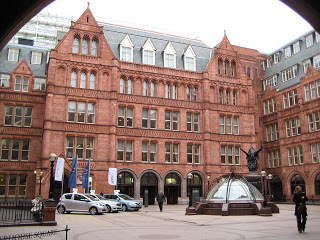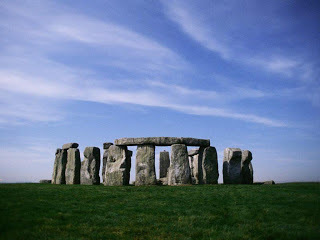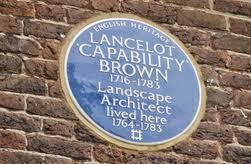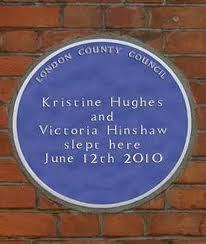The Story of English Heritage by Guest Blogger Jo Manning

[Full disclosure: my daughter, a wall painting conservator, has worked for English Heritage since her graduation from London’s Courtauld Institute of Art]
English Heritage is the conservation arm – overseeing the “built environment” -- of the British government, with specialists providing advice on every level to all groups, including local authorities and property owners and maintaining over 400 historic properties for the enjoyment of the British public and of tourists and visitors. Its official title is the Historic Building and Monuments Commission for England, and is administered by the Department for Culture, Media, and Sport. (Sport?!) It was founded under the National Heritage Act of 1983, assuming the duties of the Ancient Monuments Board, the Historic Buildings Council, and the Royal Commission on the Historical Monuments of England.
Their London office is in Holborn, in a handsome Victorian Gothic Revival building designed by the noted architect Alfred Waterhouse, whose best-known work is London’s Natural History Museum:

Waterhouse Square: English Heritage's London Office
© English Heritage, Richard Dumville

Over 11 million visitors a year go to these historic sites, of which some 750,000 are members. For a mere £47 a year (that’s less than a hundred dollars US), one can become a member of EH and gain admission to well-known properties like Stonehenge to far lesser-known – and even obscure – properties such as the Burial Ground Wall North of the Friends Meeting House in Burgh by Sands, Carlisle, Cumbria.
Since 1986, the iconic round Blue Plaques, seen on historic buildings all over London has been administered by English Heritage; the program itself has been in existence since 1866. Described as “a uniquely successful means of connecting people” with the places in which they resided, it has inspired like plaques in many other places, including areas outside of London in the United Kingdom. For the history of these plaques, click here.

It’s interesting to note that among the first names considered for this program – which was the idea of a William Ewart, an MP in the House of Commons, in 1863 -- were Benjamin Franklin, David Garrick, and Lord Nelson. The first plaque erected, in 1867, named the poet Lord Byron; it was his birthplace, 24 Holles Street, Cavendish Square. Unfortunately, the house was demolished twenty-two years later. The earliest of these plaques to survive, dating from the same year, commemorated Napoleon III in King Street, St. James’s. Did you know that anyone can suggest a blue plaque? See further details here. And, if you'd like to create your own virtual blue plaque, click here. To order a real, three dimensional personalized any way you like, click here.

English Heritage also pursues an active publications program. Click here for more information.
[image error]
Published on June 27, 2012 23:59
No comments have been added yet.
Kristine Hughes's Blog
- Kristine Hughes's profile
- 6 followers
Kristine Hughes isn't a Goodreads Author
(yet),
but they
do have a blog,
so here are some recent posts imported from
their feed.



